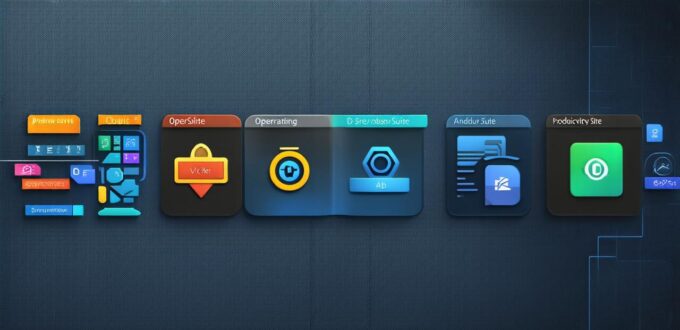1. Productivity Software
Productivity software is designed to help individuals and businesses work more efficiently and effectively. This type of software includes applications such as word processors, spreadsheets, presentation software, and time management tools. These tools are essential for completing tasks such as writing documents, creating presentations, tracking expenses, and managing schedules.
One of the key benefits of productivity software is that it can help you stay organized and focused on your work. By using tools like calendars, task lists, and project managers, you can keep track of important deadlines and ensure that all your tasks are completed on time. Additionally, productivity software often includes features such as collaboration tools, which allow multiple users to work on the same document simultaneously, making it easier to collaborate with colleagues or clients.
However, there are also some limitations to consider when using productivity software. For example, many of these applications can be complex and difficult to use for those who are not familiar with them. Additionally, some productivity software can be expensive, particularly if you need access to advanced features or multiple licenses.
2. Entertainment Software
Entertainment software is designed to provide users with a wide range of entertainment options, from games and music to movies and videos. This type of software includes applications such as video game consoles, media players, and social networking platforms.
One of the key benefits of entertainment software is that it can provide users with endless hours of fun and enjoyment. Whether you are a gamer, a musician, or a movie lover, there is always something new to discover in this type of software. Additionally, many entertainment applications include features such as social networking tools, which allow users to connect with friends and family and share their experiences with others.
However, there are also some limitations to consider when using entertainment software. For example, some applications can be highly addictive, leading to a loss of productivity and other negative outcomes. Additionally, some forms of entertainment software can be expensive, particularly if you need access to the latest games or movies.

3. Educational Software
Educational software is designed to help individuals learn new skills and knowledge through interactive and engaging applications. This type of software includes applications such as language learning tools, math games, and educational videos.
One of the key benefits of educational software is that it can provide users with a fun and interactive way to learn new things. By using games, quizzes, and other interactive tools, you can engage with the material in a more meaningful way than traditional classroom settings. Additionally, many educational applications include features such as progress tracking, which allows users to monitor their progress and identify areas where they need to focus.
However, there are also some limitations to consider when using educational software. For example, not all educational applications are created equal, and some may be of higher quality than others. Additionally, some forms of educational software can be expensive, particularly if you need access to a large library of materials or interactive tools.
4. Utilities Software
Utilities software is designed to help users manage and maintain their computers, providing essential tools for tasks such as cleaning up files, optimizing performance, and managing security settings. This type of software includes applications such as antivirus programs, disk cleanup utilities, and system optimization tools.
One of the key benefits of utilities software is that it can help you keep your computer running smoothly and efficiently.
